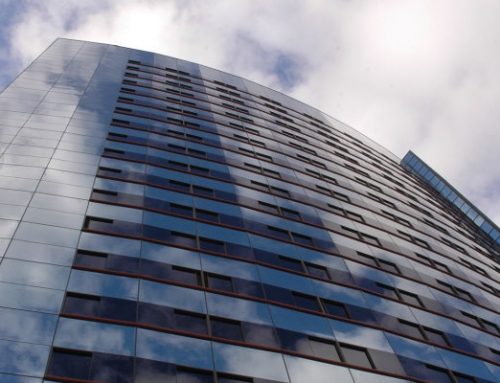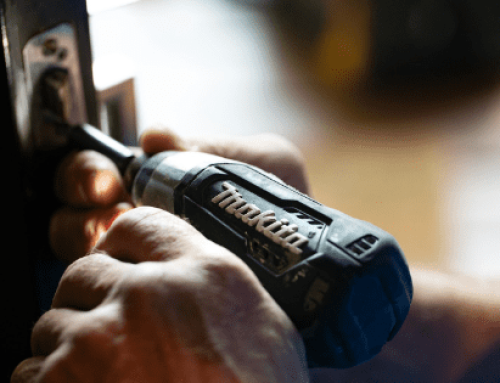If you’re a leaseholder or freeholder in the UK, chances are you’ve heard of the Section 20 consultation process – but what exactly is it?
In this article, we’ll explain everything you need to know about the Section 20 consultation process, including what it is, when it’s required and how it works. By the end of our handy guide, you’ll be an expert on the subject!
What is a Section 20 Consultation?
A Section 20 Consultation is a legal requirement for landlords who intend to carry out major works on certain types of buildings, particularly where the costs will be recovered through service charges paid by leaseholders. This process ensures that leaseholders are given sufficient notice of the proposed works and are afforded the opportunity to provide feedback or raise concerns.
The consultation process is governed by the Landlord and Tenant Act 1985, specifically outlined in Section 20. It involves several key stages:
- Notice of Intention: The landlord must first serve a Notice of Intention, which informs leaseholders that the landlord intends to carry out major works. This notice includes a brief description of the works and invites leaseholders to comment and suggest contractors.
- Consultation Period: Following the Notice of Intention, a consultation period begins, during which leaseholders have a statutory right to respond. This gives them time to review the proposal, provide feedback, and recommend contractors for the job. If a recognised tenants association (RTA) is in place, the RTA will also be consulted.
- Obtaining Estimates: During the consultation period, the landlord must obtain at least two estimates for the proposed works. One of these estimates can be from a contractor suggested by the leaseholders or the recognised tenants association. The leaseholders have the right to review and compare the estimates obtained before any final decision is made.
- Notice of Proposals: Once the estimates have been gathered, the landlord must issue a Notice of Proposals, which outlines the costs, contractors, and other key details. This notice allows leaseholders to review the final options before the landlord proceeds.
- Major Works and Service Charges: If the landlord intends to recover more than £250 per leaseholder in service charges for the proposed works, they must follow the Section 20 consultation procedure. This is crucial to ensure that the costs are transparent and that leaseholders have the opportunity to challenge the reasonableness of the charges.
The Section 20 consultation process ensures transparency and fairness when major works are being planned. It allows leaseholders to voice their opinions, ensures competitive pricing through the obtaining of multiple estimates, and protects against unreasonable service charge increases.
Find Out More: Rental Property Repairs vs Improvements: Why & When
When is a Section 20 consultation required?
A Section 20 consultation must be carried out by the landlord or freeholder before any major works can begin.
The definition of ‘major works’ can vary somewhat, but generally speaking, it refers to works that are likely to cost each leaseholder over £250.
Examples of works that would fall under this category include:
- External decoration works
- Replacing the roof
- Carrying out substantial repair work to the structure of the building.
Find Out More: What is Building Surveying? Landlords Guide
What are my rights and responsibilities?
If you own a freehold or share of the freehold (or you’re a property manager) you may have a responsibility to maintain and repair it to a reasonable standard and to meet block health and safety regulations. You also have a responsibility to consult leaseholders ahead of any major works on their building.
These responsibilities apply to any shares of a freehold owned by a Right to Manage or Residents Management Companies, where it will become the RMC or RTMs responsibility to submit an S20 before major works.
As a leaseholder, you have the right to be consulted under the tenant act, enacted in order to protect leaseholders, if the landlord decides to undertake major works for which you will need to pay a service charge.
The S20 framework provides a specific plan for consulting with leaseholders to aid you in meeting these requirements. All the leaseholders should be informed of the proposed works, cost and nominated contractors, which is what the consultation process outlines.
How Do You Prepare For the Section 20 Consultation Process?
As a freeholder, you should have a long-term agreement in place with your tenants that sets out how you will keep the property in a good state of repair, and how you will share the costs of any major works.
You should also have a current list of all the leaseholders in your building, as well as their contact details. If you don’t have this information, you can request it from the leaseholders themselves, or enlist a professional block manager to help you do so.
Once you have all the necessary information, you should appoint a suitably qualified contractor to carry out the works. It’s important to note that under the terms of the Act, you cannot carry out the work yourself, nor can you appoint a relative or friend to do so.
As a leaseholder, you should be aware of the major work process and what your rights are. This includes being aware of when you will be consulted, as well as your right to object to the proposed works (more on this later).
You should also have a good understanding of your lease agreement, as this will likely contain provisions regarding major works and how you will be required to contribute to the costs.
The Section 20 Consultation Process Explained
Residential leaseholders are protected by law and must be consulted before any major works can take place in their building.
The consultation process is designed to give leaseholders the opportunity to have their say on the proposed works, as well as to understand how much the works are likely to cost them.
Outlined in the The S20 consultation procedure has three stages:
- Notice of intention
- Statement of estimated costs
- Notice of reasons
Here’s an outline of what should be included in each stage:
Stage 1: Notice of intention
The first stage of the consultation process is the notice of intention, which must be served on all the leaseholders in the building (as well as the managing agent, if there is one).
The notice of intention must contain the following information:
- The freeholders name and address
- The address of the property
- A description of the proposed works
- The date on which the works are proposed to start.
The notice of intention must also state that leaseholders have a right to object to the proposed works, and explain how they can do so.
Stage 2: Statement of estimates
The second stage of the consultation process is the statement of estimated costs, which must be sent to all the leaseholders (as well as the managing agent, if there is one) at least 21 days before the works are due to start.
The statement of estimated costs must contain the following information:
- A breakdown of the estimated cost of the works, with multiple estimates where possible
- The name and address of the contractors who have provided estimates for the works
- Details of any other costs that leaseholders will required to pay, such as administration fees
- Confirmation of the date on which the works are proposed to start
- Another opportunity to provide observations or feedback on the proposed works with a clear deadline.
Stage 3: Notice of reasons
Where applicable, the third stage of the consultation process is the notice of reasons, which must be sent to all the leaseholders at least 14 days before the works are due to start.
The notice of reasons must contain the following information:
- Notice that you have entered into a contract for said works
- Confirmation of the works with an explanation of the reasons for carrying out the works
- The name and address of the contractor who will be carrying out the works
- Confirmation of the date on which the works are proposed to start
- An opportunity to provide observations or feedback on the proposed works with a final deadline.
Looking For Support To Manage Your Block & Oversee Your Section 20 Consultation Process?
At Scanlan’s Property Management, we understand that managing a property can be a time-consuming and complex process.
We offer a comprehensive range of residential block management services to support both leaseholders and freeholders, including assistance with section 20 consultations.
For more helpful advice or information about our services, or to discuss your specific requirements in detail, contact us today.
Section 20 Consultation FAQs
What if I want to object to the proposed works?
As a leaseholder, you have a right to object to the proposed works if you think they are unnecessary or too expensive. You can do this by writing to the freeholder or managing agent via the details provided in your section 20 notice. You may want to seek advice from an expert before doing this.
Who can issue a section 20 notice?
Only the freeholder or landlord of a property can issue a section 20 notice. The S20 notice is designed to ensure freeholders can consult with leaseholders over proposed major works, and to provide cost estimates in advance.
Does section 20 apply to freeholders?
Yes, section 20 of the Landlord and Tenant Act 1985 applies to both freeholders and leaseholders. In the context of major works, a section 20 notice is sent by the freeholder to consult with leaseholders about proposed works.
What are qualifying works?
Qualifying works are any works which would cost each leaseholder more than £250 (excluding VAT) if carried out. For the purposes of a section 20 consultation, qualifying works can be either repairs or improvements, usually to large common grounds. For example, installing a new lift or repairing the roof would be considered qualifying works.
How long does a section 20 consultation take?
The minimum time period for a section 20 consultation is two months, however this can be extended at the discretion of the freeholder. In practice, most consultations will take longer than two months to complete.










What happens if a tenant objects to a S20’notice
Can a leaseholder object to works being carried out as being unnecessary and refuse to pay?
There isn’t much information on if you object to the work being done . Work is supposedly going to be carried out on my roof and I’m not even in the country . I have made them aware of this and I have sent through my observations buy have had no reply . Are they allowed to just carry out the work and what is the point of an observation period if they are able to just ignore it .
Thanks
Does a RTM have any say in choice of service provider under a Section 20?
Our landlord /management company has simply said they choose the cheapest.